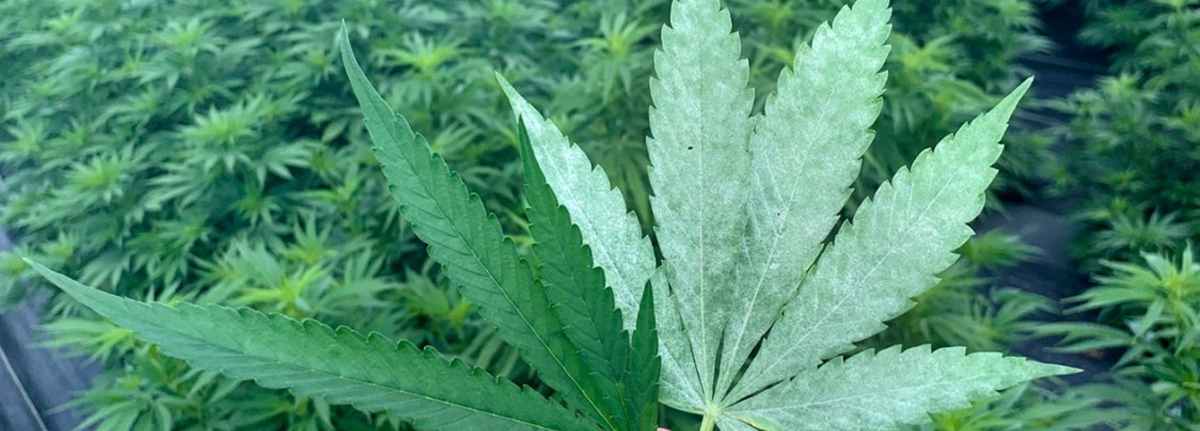When growing cannabis, you will inevitably encounter accidents. When your friend develops yellow or brown spots on the leaves or gray-white mold on the flowers, you should pay attention.They may now be facing the threat of certain diseases. Today we will take a look at common diseases that occur when growing cannabis and how to solve and prevent them.
Common disease identification
During cannabis cultivation, timely recognition of common diseases that plants may suffer is crucial to taking effective measures to prevent the spread of disease. Here are some ways to identify and treat some of the most common diseases of cannabis plants:
Botrytis
Botrytis is one of the most common problems in cannabis cultivation, and it usually thrives in moist environments。The disease first attacks the flowers of the plant and then spreads to the leaves and stems。Gray-white mold will appear at the infected site, gradually causing plant tissue to die. Early identification and treatment are key to avoiding the spread of gray mold.

Approach:
Enhance ventilation: Ensure the planting environment has good air circulation and reduce humidity, thereby reducing the risk of gray mold.
Reduce humidity: Use a dehumidifier to maintain the relative humidity of the environment within an ideal range. It is generally recommended to be between 40% and 50%.
Remove infected parts promptly: Once you notice signs of gray mold on a plant, you should immediately cut off the infected parts and dispose of them properly to avoid the spread of the disease.
Root rot
Rot affects the roots of cannabis plants, causing root rot, which affects the plant's ability to absorb water and nutrients. Affected plants will show signs of wilting and slow growth. Excessive soil moisture is one of the main causes of root rot, so ensuring good drainage and proper watering frequency is crucial to preventing this disease.
Approach:
Improve drainage: Make sure to use a well-draining soil mix and suitable planting containers to avoid moisture accumulation.
Adjust watering frequency: Water according to your plants’ actual needs and avoid overwatering. It is usually a good strategy to wait until the soil surface is dry before watering.
Use biological control agents: Some biological control products can help enhance plant root health and combat root rot attacks.
Leaf spot disease
Leaf spot causes yellow or brown spots on the leaves of cannabis plants, and in severe cases the leaves will wilt and fall off. This disease is usually caused by a fungal or bacterial infection. Improving the overall health and resistance of the plant can effectively prevent the occurrence of leaf spot.

Approch:
Use organic fungicides: For leaf spot, you can use copper-based and sulfur-based organic fungicides. These fungicides are environmentally friendly and can effectively control the disease.
Clean fallen leaves in a timely manner: Regularly check and clean leaves that have fallen or are affected by disease to reduce the breeding of pathogens in the planting area.
Enhance plant resistance: Provide sufficient nutrients and appropriate light to help plants build a strong immune system and improve their natural resistance to leaf spot disease.
How to prevent it?
A clean, well-ventilated growing environment, coupled with proper temperature and humidity control, is the first line of defense against pathogens. Additionally, by using high-quality soil and maintaining proper moisture management, the occurrence of disease can be significantly reduced. Here are a few core steps to prevent disease:
Temperature and Humidity Control: Maintaining appropriate temperature and humidity levels is paramount in preventing many diseases. Excessive humidity is a breeding ground for various diseases such as gray mold, while suitable temperature helps plants grow healthily and resist pests and diseases.
Good ventilation: Good ventilation can reduce the accumulation of moisture in the air and prevent the growth of pathogenic bacteria. To ensure air circulation in the growing space, you can use fans to assist, but avoid direct strong winds towards the plants.
Quality Soil: Avoid root diseases by using high-quality, well-drained soil. Proper soil pH (usually between 6.0 and 7.0) is also critical for plants to absorb nutrients.
Proper Fertilization: Over or under fertilization can weaken the plant's resistance. Apply the appropriate type and amount of fertilizer based on the plant's growth stage and needs.
Clean up regularly: Keep the planting area clean and remove dead or damaged plant tissue regularly to reduce the chance of disease spreading.
Regular Checkups: Frequently check the health of your plants, including leaves, stems, and roots. For diseases detected early, timely intervention can effectively control the disease and prevent its spread.
Armed with these key disease identification and treatment tips, as well as daily preventative measures, your cannabis growing journey will be much smoother.
If you encounter any difficulties during the planting process, or want to learn more about how to protect your green friends from common diseases, don’t hesitate to contact us immediately by clicking on the dialog box below!
Our team of experts are ready to provide you with professional advice and support to help your cannabis plants grow healthily and achieve optimal harvest condition.























